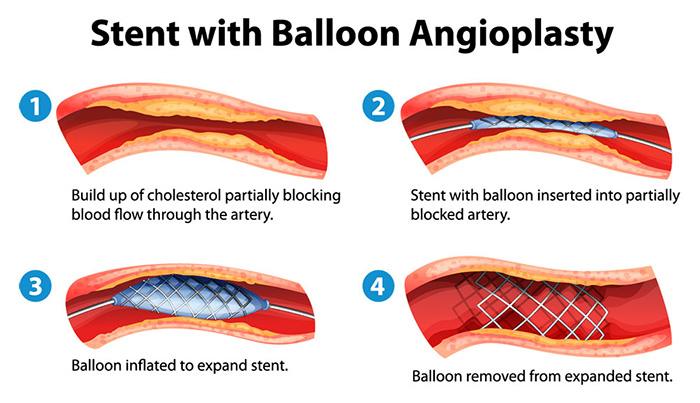Exciting News for Patients in 2020
Beginning in 2020, the Centers for Medicare and Medicaid Services (CMS) has approved the inclusion of Percutaneous Coronary Intervention (PCI) codes in the list of covered procedures in the Ambulatory Surgical Center (ASC) setting. This means that all Medicare and Medicaid patients needing PCI can now be diagnosed and treated in an outpatient setting.
Physicians and patients alike believe this much-needed update to the system will offer a safe, convenient and cost-effective alternative to hospitals.
Percutaneous Coronary Intervention (PCI)
PCI, also known as coronary angioplasty, is a procedure performed to open blockages in the heart arteries, normally caused by Atherosclerosis or plaque buildup, and is done to improve blood flow to the heart. Plaques form as a result of coronary artery disease, an inflammatory process that eventually results in calcium deposits within the walls of blood vessels. If these plaques become severe enough, impairment in blood flow to the heart results. PCI is commonly performed in patients who have symptoms of coronary artery disease (chest pain) and in patients who are actively having a heart attack. The major benefit of this procedure is the reduction of symptoms (e.g. chest pain, shortness of breath) related to coronary artery disease, and in some instances can reduce the incidence of heart attack or death.
Understanding the Coronary Angioplasty / Stent Procedure
PCI, if necessary, is performed following a cardiac catheterization. A long, thin, flexible tube, called a catheter, is typically inserted into the leg or arm through a tiny incision (typically less than one-tenth of an inch) at the skin surface. These catheters travel through blood vessels to the heart. A wire is then advanced through the catheter and inserted into a coronary artery.

Usually a balloon is advanced over the wire and the balloon is inflated at the location of the severe blockage or plaque. The balloon alone can be used to treat the blockage, but in most instances, a stent is required for best results. The stent, if needed, is initially located on the outside of a balloon. The stent and balloon are then advanced over the wire and the balloon is inflated. The balloon inflation expands the stent up against the wall of the artery, securing it in place.
The walls of the heart artery will eventually grow around the stent, much like ivy can grow and eventually cover a chain-link fence. While this healing process is occurring, certain medications are extremely important to take. In most instances, aspirin is required life-long, and an additional anti-platelet medication (e.g. clopidogrel, prasugrel, or ticagrelor) is needed for months to years, depending on the type of stent and reason for its placement. Your doctor will discuss with you the specifics regarding necessary medications. If you recently have had a PCI procedure, and are taking medications prescribed by your physician, do not stop these medications for any reason without consulting your doctor.
Contact Us Today
If you think you are at risk of coronary artery disease and in need of a potential coronary intervention, the doctors at this center can help! Make the connection now.



